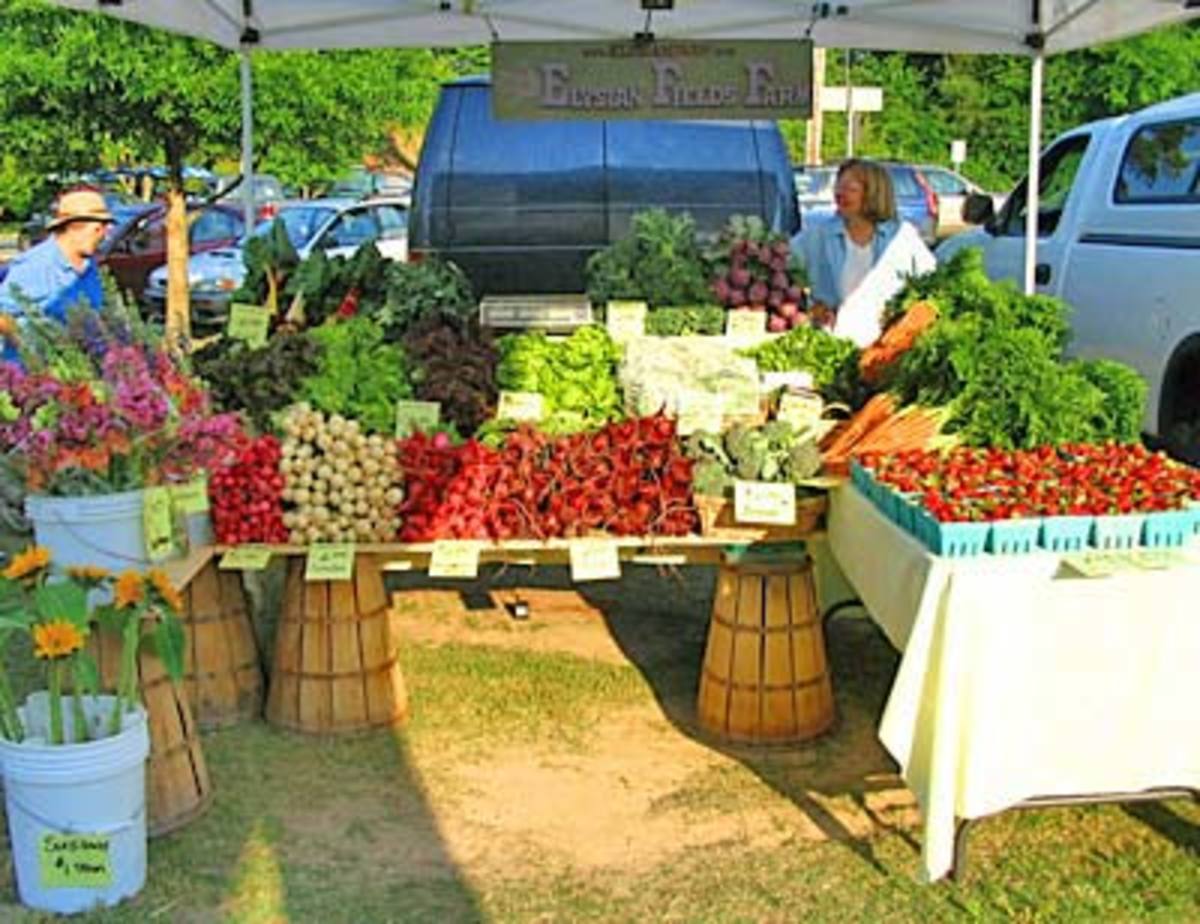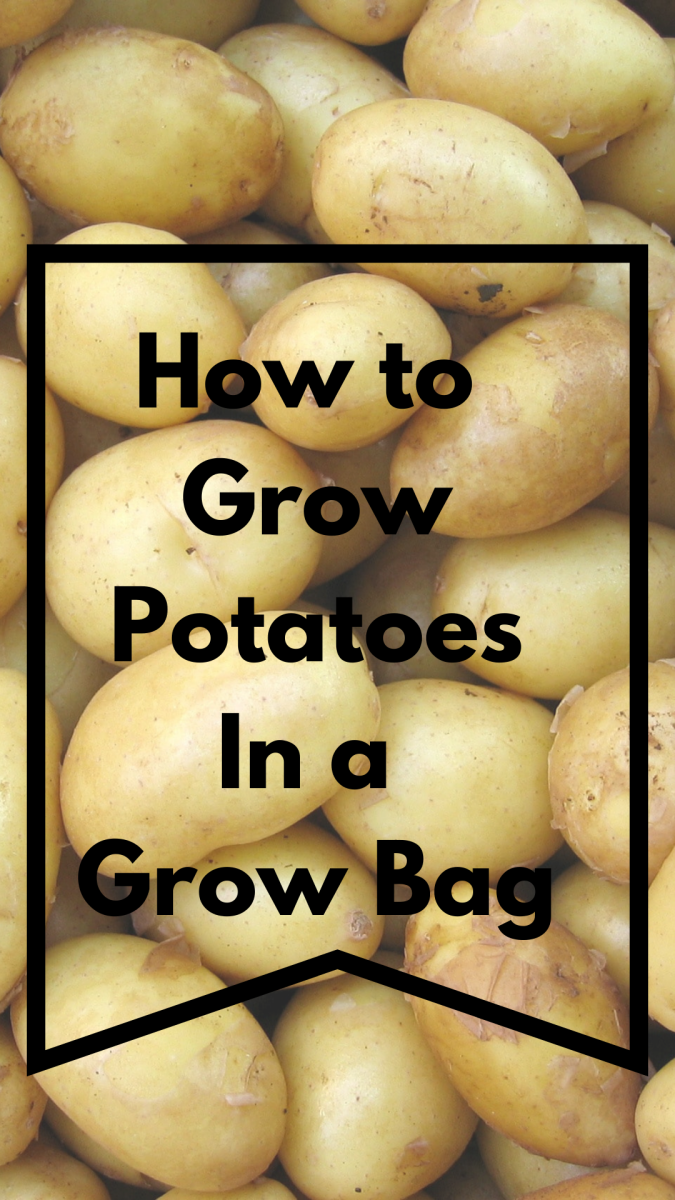How to Protect Individual Young Garden Plants from Deer and Rabbits
Individual Plant Protector
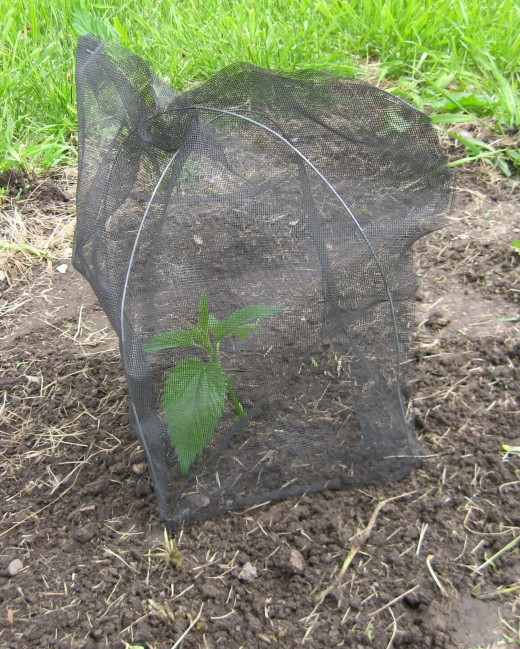
Young garden or bedding plants are very vulnerable and need protection when first planted. A quick nibble or taste by a deer or rabbit may take most of the plant, wasting the money you spent and the hard work you invested in planting. When the plants are established and a bit larger, they are less vulnerable and perhaps by then there is more natural foliage for deer, rabbits and other creatures to feed on. This hub will describe a quickly made, inexpensive “tent-like” device made of window screening that will provide deer protection and rabbit protection to individual bedding plants for several weeks until they outgrow the enclosure. It is an alternative to the deer netting coverage of entire rows described in the hub How to Protect Garden Bedding Plants from Deer and Rabbits. These plant protectors are probably best for fairly widely spaced bedding plants like green peppers as opposed to more closely spaced seed planted items like beans, lettuce, or beets. These protectors are also a good way to recycle window screening material that is replaced because of small holes or light damage. The steps below suggest dimensions, but within reason, you can proportionately adjust the dimensions to whatever you need.
Tools and Materials Needed
- Screening Material (aluminum or fiberglass)
- Stiff Wire
- Garden staples (optional for aluminum version)
- Scissors or Tin Snips
- Stapler
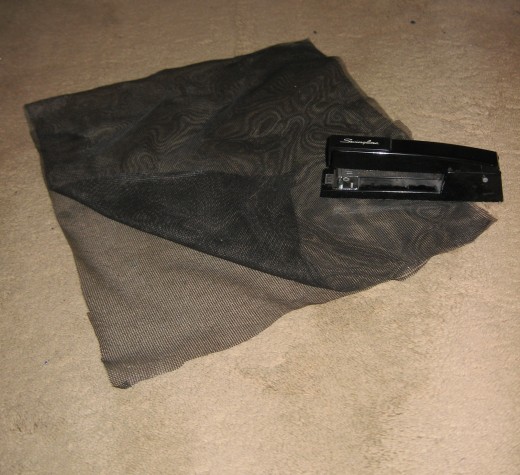
Form plant protectors
The screening can be either aluminum or fiberglass. Fiberglass only costs about half as much as aluminum if you have to buy new materials, but aluminum is more self-supporting. Cut about a 2 ft x 1 ft piece of screening material using scissors for fiberglass or tin snips for aluminum. Fold the material over loosely so that you have about a 1 foot x 1 foot square. Then staple it with an ordinary desk or paper stapler at about 2 inch intervals along the top and side.
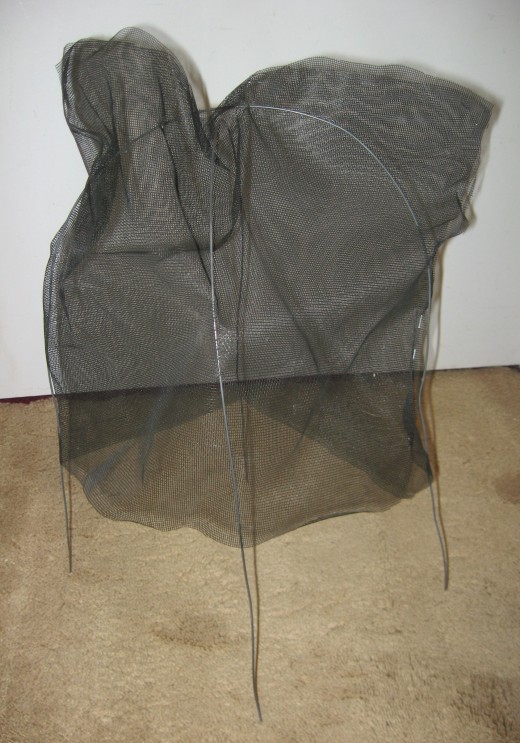
Fiberglass Screening Material
Cut two pieces of wire each about 40 inches long. Each piece needs to be long enough to thread through both sides of the protector and leave about 6 inches on each side to stick into the ground. The wire size is not critical, but it should be stiff enough to stick into the ground, yet small and flexible enough to thread easily through the screen material. Something about 1/16 inch thick (slightly smaller and softer than light coat hanger wire) works well. Form the wire into a semicircular shape and thread a piece up through one side of the folded material, across the top and back down the other side. Straighten the wire into more of an inverted “U” shape. Repeat with the other piece of wire at right angles to the first piece. Trim the protruding wire ends to about 6 inches if necessary. Massage the assembly into something resembling a crude dome with the protruding wires straightened for pushing into the ground. The crossed, inverted “U” supports help to keep the fiberglass material from sagging too much.
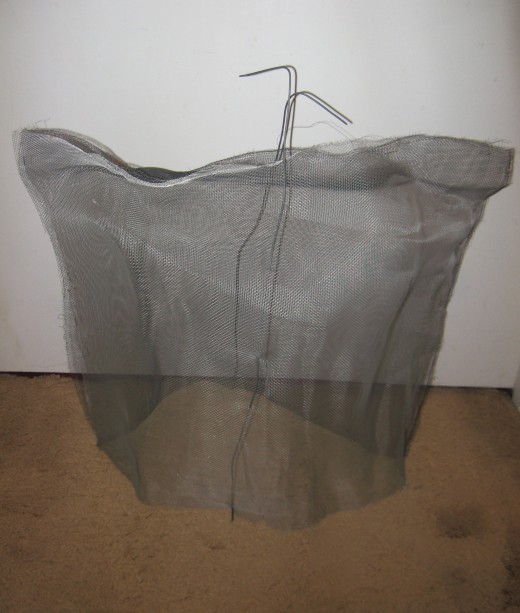
Aluminum Screening Material
The aluminum material is stiff enough to support itself (i.e. not sag) so the construction is slightly simpler. Cut two pieces of wire each about 20 inches long. Thread them through opposite sides of the protector. Bend about an inch or so of each piece of wire down at the top to keep it from pulling down through the screening. Form the assembly into something resembling a crude dome tent with the protruding wires straightened as necessary and trimmed to protrude about 6 inches. For better stability in windy conditions use a couple of garden staples also when you put it in the garden so it is anchored on 4 sides. Alternately, you could just eliminate the wires and fasten the aluminum screen protector down with four garden staples.
Install protectors over plants
Level the ground around each plant as necessary and put the protectors in place, getting them as snug down to the ground as possible. Remove each protector when the plant inside has grown to the point where it becomes crowded. Store the removed plant protectors for reuse next year.
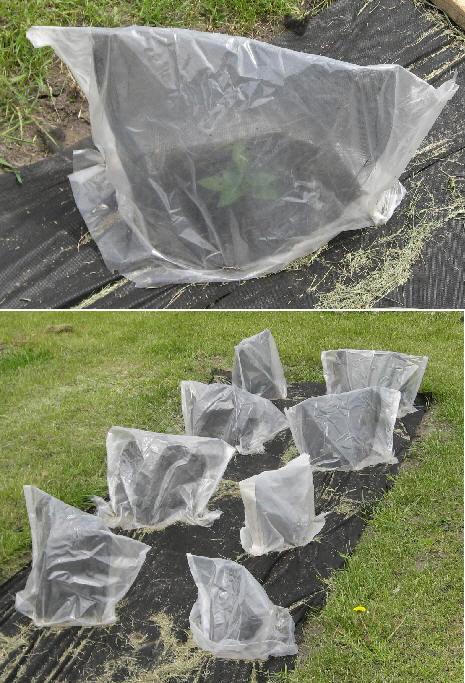
Frost protection option
If you have put out your plants early and a night with light frost is predicted, the covers described above can be easily covered with plastic to protect your plants. Simply cut a piece of clear plastic sheeting (1) long enough to lay over the screen wire cover and lap the ground a bit on each side and (2) slightly wider than the screen wire cover. Make a sort of large plastic bag by folding the cut plastic over and closing the opposite open sides by folding over a narrow strip on each of those sides and stapling with an ordinary desk stapler. Slip the plastic “bag” over the screen wire cover and fasten to the ground with 4 garden staples. The screen wire cover keeps the plastic up off the plants and the plastic protects against a light frost. The plastic cover can be left on for a while if the weather stays cool and on sunny days it will keep the plants warmer.


